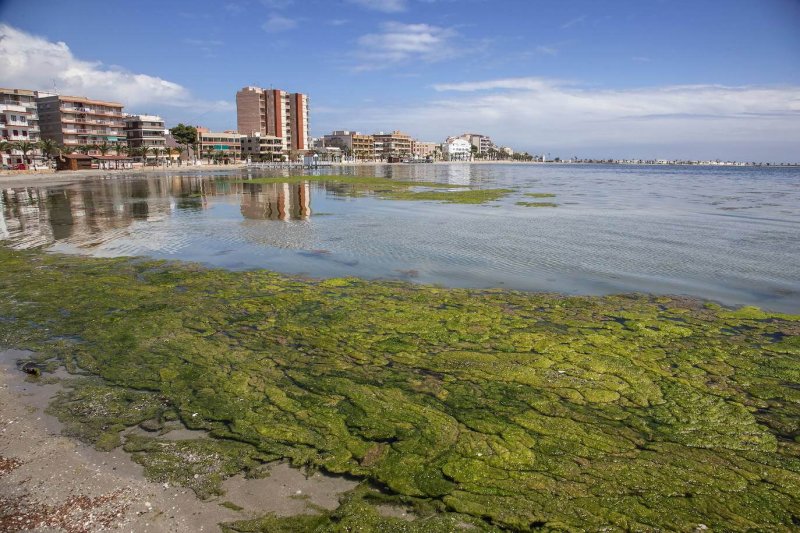In recent years, the eutrophication that the [Spanish lagoon] Mar Menor has undergone, a process derived from the overload of nutrients in the water column, has caused the runaway growth of phytoplanktonic algae …. With the progressive rise in temperatures in the area, filamentous algae known as ‘slime’ or ‘mucus’ proliferated, adding to the accumulation of decomposing biomass on some beaches of the Mar Menor.
…
But what if one of the enemies of the Mar Menor could become your best ally?
The research group on Molecular Recognition and Encapsulation, part of the Department of Health Sciences of the Catholic University of Murcia, has developed a sustainable approach to cleaning the water that flows into the lagoon through the rivers such as that of Albujón through the use of microalgae, a “natural bioabsorbent of harmful compounds.”
This research has focused on eliminating toxic substances from intensive agriculture in Campo de Cartagena such as nitrates, phosphates and herbicides such as simazine, atrazine or terbutylazine, as well as other pollutants of urban origin such as pharmaceutical products, specifically adenosine or ibuprofen. [Researcher José Antonio] Gabaldón confirms that the use of microalgae to ‘purify’ the flow of the rivers that discharge into the lagoon could act as a green filter that would be environmentally and economically sustainable.
[Editor’s note: This article was originally published in Spanish and has been translated and edited for clarity.]































